BY LINCOLN ANDERSON | Assemblymember Deborah Glick, state Senator Brad Hoylman and incoming Councilmember Christopher Marte all decried the Soho/Noho rezoning during a marathon, nearly seven-hour-long public hearing on Tuesday. Joining them were dozens of local residents and preservationists who urged that the “deeply flawed” rezoning be scrapped.
The hearing, held by the City’s Council’s Subcommittee on Zoning and Franchises, was one of the last steps in the more than half-year-long ULURP public-review process for the contentious rezoning scheme. Next, the rezoning will go to the full City Council for a binding vote, which will not include an opportunity for public testimony. Finally, the rezoning will go to the term-limited mayor — the plan’s chief supporter — for his signature.
No guarantee of affordability
One of the opponents’ main arguments on Tuesday was simple: namely that, while the de Blasio administration is touting the rezoning as a way to create affordable housing in Soho and Noho, there are, in fact, zero guarantees that the plan would create even one single unit of affordable housing. Instead, as one speaker put it, the Soho/Noho rezoning would be nothing but a “wet dream” for luxury developers.
Among other things, the rezoning would legalize new residential construction and ground-floor retail, both of which currently need special-permit applications in Soho and Noho, plus upzone the area for development up to two and a half times larger than allowed now. If approved, it would be the first-ever major upzoning in a New York City historic district.
Glick, in her remarks, said neighborhood residents have been mischaracterized as wealthy, when, in fact, “the majority of people who actually live in the community are average New Yorkers.”
She warned that rent-regulated tenants in Soho and Noho’s unique joint live/work quarters for artists (J.L.W.Q.A.) would be at risk of eviction under the rezoning.
“Protection from eviction in this plan is not adequate,” she said.
New York State’s sweeping 2019 package of tenant protections specifically would not block demolition of residential buildings, including those containing affordable housing, she warned, noting that is the “big loophole.”
“This is a plan for thousands of luxury units,” she charged, “an audacious giveaway to luxury development, guaranteeing a less diverse and more wealthy enclave while undermining an important and existing arts community.”
Opportunity — for developers
Glick further said that the rezoning’s three so-called “opportunity zones” — where the city envisions the most development occurring — are on the border of areas that are “already under real estate stress,” like Chinatown and the East Village, which would, in turn, exacerbate displacement pressure on those communities.
“The opportunity zones signal that luxury development is really the core of this proposal,” she maintained.
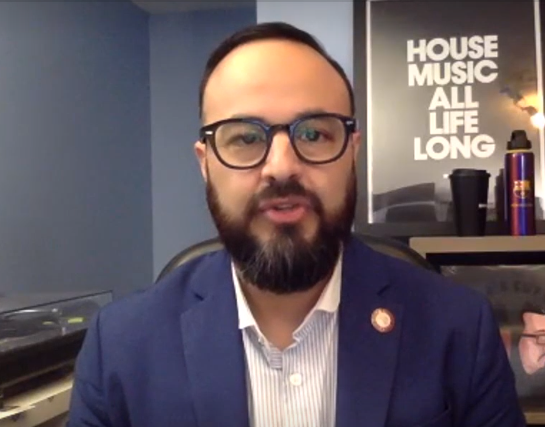
Yet another problem, the rezoning doesn’t ban dormitories, Glick said, noting, “N.Y.U. is always looking to expand.”
On the other hand, the assemblymember praised Community Board 2 for identifying a federally owned garage at 2 Howard St. in Soho as a potential site for affordable housing.
“We could get 100 percent affordable housing at that location,” she stressed.
The assemblymember also blasted the rezoning’s proposed artists’ fund, which would come from a flip tax on sales of J.L.W.Q.A.-zoned units to nonartists, calling it “an undefined sham with no details on how the money would be used or who might be eligible for it.”
Glick: ‘Mayor weakened protections’
In general, Glick said, “The entire plan ignores historic districts, their value to the city and Soho as a national historic landmark district. But this mayor weakened landmark protection rules…with no concern for the value of history that other cities work diligently to protect.
“I oppose this plan in the waning days in the most unpopular mayoralty that exists in my memory,” Glick declared.
Hoylman, for his part, said the proposed rezoning did not live up to its stated goal of having “broad agreement” among stakeholders, including Soho and Noho residents and C.B. 2, which overwhelmingly opposed it.
“The plan has almost no guarantee of affordable housing,” he said. “It allows for construction of mixed-use buildings…and so long as the residential portion occupies less than 25,000 square feet, wouldn’t require any affordable housing, which threatens to undermine much of the original proposal’s promise [of affordable housing].”
Hoylman: ‘Relies heavily on demolition’
Hoylman charged the plan also “relies heavily” on the demolition and replacement of existing rent-regulated and Loft Law buildings and displacement of their tenants to allow for new development.
“You have to think of the people who live there now,” he stressed.
“The broad upzoning of an established and well-functioning historic district may be without precedent in the city,” Hoylman warned. He added that the Landmarks Preservation Commission has routinely been O.K.’ing projects that gut historic buildings but keep their facades, a tactic landlords can wield to evict rent-regulated tenants.
“If the L.P.C. continues to allow this type of ‘facadeism,’” he said, “this is all but certain to result in evictions of longtime tenants of the area.”
Hoylman also objected that the rezoning would legalize big-box retail stores larger than 10,000 square feet, urging the city to maintain Soho and Noho’s current special-permit process for large-size retail.
“A blanket rezoning isn’t going to work in these neighborhoods,” he concluded, urging the planners to “attempt a fresh start in the next administration.”
Marte: ‘A giveaway to developers’
Marte, the incoming District 1 City Councilmember, called it a “flawed zoning application.”
“Soho/Noho deserve true affordable housing,” he said, “but not at the expense of overdevelopment and displacement. Say no to this giveaway to developers and say not to this rezoning.”

Some residents who spoke pointed out that Marte’s recent landslide election win was a clear mandate, showing district residents oppose the rezoning.
While Glick, Hoylman and Marte were forthcoming with public statements on the rezoning, Manhattan Borough President Gale Brewer did not testify Tuesday.
Brewer — for once — doesn’t show up
At one point, a Department of City Planning official said of the usually ubiquitous Brewer, “Our intel is that she’s going to join us later today.” But she apparently never showed up during the nearly seven-hour hearing.
In September, Brewer testified during the City Planning Commission’s ULURP hearing on the rezoning, pointedly saying, “There are so many challenges to this project. We all have to come up with something that is different than the current proposal.”
In a more recent statement to reporter Dashiell Allen for The Village Sun, Brewer clarified her position, saying, “I cannot support the rezoning as it stands. We can do better than the current proposal. Commercial F.A.R. [floor area ratio] must be reduced, the historic district must be preserved, subsidies must be provided to developers who exceed M.I.H. [Mandatory Inclusionary Housing] guidelines, and Loft Law tenants must be protected.” The borough president added that she is “continuing to ensure that the NYC Council’s Land Use team is aware of these concerns.”
Soho activist: ‘Created a monster’
However, Sean Sweeney, director of the Soho Alliance, has criticized Brewer for spearheading the “envisioning process” for Soho and Noho four years ago, yet now seemingly ducking the spotlight.
“This was Gale’s baby,” he told The Village Sun, speaking before Tuesday’s hearing. “She’s sticking her head in the sand and claiming she has nothing to do with it. She’s the mother of this Frankenstein monster she created. Every single meeting was in her borough president’s office. Her money funded the Envision Soho/Noho six-month study.” He said Brewer also apparently never issued a written report on the rezoning as required by her role in the ULURP review.
Brewer’s office did not respond to a request for comment.
Planners: ‘Unfair and broken zoning’
In their introductory remarks at Tuesday’s hearing, City Planning officials said the administration’s plan was meant to fix Soho and Noho’s “unfair and broken zoning,” which currently “excludes moderate and low-income New Yorkers” from living there. Although much of the area’s housing is rent-regulated, the planners said it’s not enough; they stressed that “income-restricted” housing must be added to the mix. Soho and Noho, which are majority white, must be racially diversified, they said.

The city projects that its plan would add 3,500 new homes to the area, with 900 of them being affordable units, created under Mandatory Inclusionary Housing. To be eligible for an affordable home, a family of three would have to earn under $40,000 a year.
Moya grills planners
Francisco Moya, the Queens councilmember who chairs the Subcommittee on Zoning and Franchises, asked pointed questions. Why, for example, he asked, is there no size limit on retail stores in the rezoning?
Sylvia Li, a senior planner at City Planning, answered that it’s because the administration sees Soho and Noho’s retail sector as “a global destination that contributes to our city’s economy significantly” and also as a major jobs provider.
Moya then queried, if City Hall sincerely wants to encourage building affordable housing in Soho and Noho, why does the rezoning raise the commercial F.A.R. even higher than it raises the residential F.A.R.? In other words, why raise the commercial F.A.R. at all, which would instead incentivize the development of things like office buildings and hotels?
Anita Laremont, the director of City Planning, answered that the city feels “a healthy balance of uses” is the right approach, and that “office strength is very important for the city’s vitality.”
But Moya asked why — with the city “in a housing crisis,” as he put it — would it be a good idea to even raise the commercial F.A.R. at all.
“This is the only rezoning that doesn’t have a significant affordable housing component,” he added, saying that other New York City rezonings typically contain sites earmarked for 100 percent affordable housing. On the other hand, despite its name, Mandatory Inclusionary Housing is a voluntary program, in that it would only be required if developers chose to build more than 25,000 square feet of residential space per zoning lot.
City unaware of 2 Howard St.?
On that question, Laremont deferred to Ahmed Tigani from the Department of Environmental Protection, who said the city, despite trying, simply could not find any “public sites” in the neighborhood for affordable housing. Apparently, he was not aware of C.B. 2 having identified 2 Howard St., and the fact that Lower Manhattan activists and politicians are also calling for the nearby 5 World Trade Center site to be used for affordable housing.
Darlene Lutz, in her remarks later during the hearing, also suggested that the sprawling Trinity Real Estate-owned vacant lot at Duarte Square, at Sixth Avenue and Canal Street, could be developed with affordable housing. The site was a cornerstone of the Hudson Square rezoning plan 15 years ago, and Trinity had proposed an 800-unit apartment building for it, with a public school in its base. Today, though, the site is not being used for housing but as an Instagram-popular outdoor bar with palm trees.
Unlike Glick, Hoylman and Marte, Councilmembers Margaret Chin and Carlina Rivera both support the Soho/Noho rezoning. Their districts include the rezoning area, Chin’s more so than Rivera’s. Like de Blasio, Chin is term-limited and will be out of office in less than two months.
City Planning’s vague answers
“We want the project to create affordable housing,” Rivera asked Planning’s Li during the hearing. “How can we limit commercial and dorm use?”
Li gave a vague answer devoid of specifics, just saying that City Planning would work with the City Council “to adjust that.”
“O.K., we’ll certainly follow up on that,” Rivera said.
The exchange was hardly reassuring.
Rivera then asked what the city is doing to “avoid displacement of the existing tenants.”
D.E.P.’s Tigani answered, saying, there would be “cross-agency” communication, plus representatives would “talk to the Mayor’s Office.”
Again — no concrete answers.
Rivera asked why no one from the Landmarks Preservation Commission was at the Zoom hearing. After all, Soho and Noho contain six historic districts’ worth of landmarked buildings.
“It’s very disappointing not to have anyone from L.P.C. at this meeting,” she said.
But Planning’s Laremont contended that Landmarks “has been involved,” stressing, “Historic preservation and equitable development are not mutually exclusive at all.”
Chin pitches nonartists’ fines
Chin, for her part, mentioned she had just introduced a local law to increase fines for residents who are not certified artists living in Soho and Noho J.L.W.Q.A. homes. The intent, on its face, seems to be an effort to preserve artists housing.
“The [current] fine is too little,” Chin stated. “There’s not enough enforcement. Right now, the [loft] sales are going on for $2,000 a square foot. This would help preserve J.L.W.Q.A.”
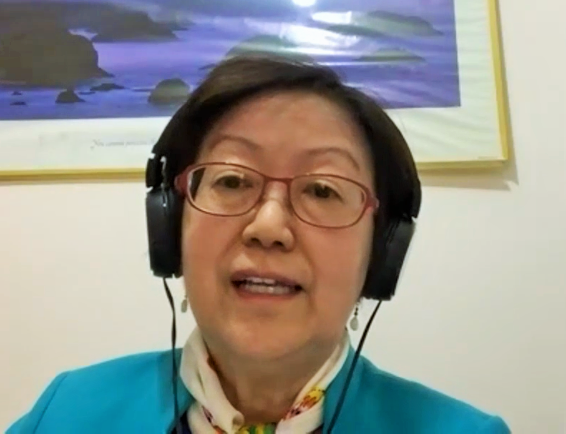
Chin also asked about “expanding the definition of ‘artists,’” apparently so that more people would qualify to live in the J.L.W.Q.A. units. But Planning’s Li said that would require a change to the state’s Multiple Dwelling Law, so is not a zoning issue.
The rest of the hearing saw opponents and supporters testify on the rezoning, but there were significantly more of the former. The opponents included longtime neighborhood residents, plus members of Village Preservation. The rezoning’s supporters were mostly young males, most of them spouting the now-familiar talking points of the pro-real estate front group Open New York.
Jeannine Kiely and Carter Booth, the respective current and previous chairpersons of C.B. 2, both testified against the rezoning. Board 2 previously voted 36-to-1 to recommend denial of the plan.
Preservationist: ‘Masquerading as social justice’
Andrew Berman, executive director of Village Preservation, accused the rezoning of “masquerading as a social justice and affordable housing plan,” charging that it would be easy — and, in fact, more profitable — for developers to skirt creating affordable housing. He added that leading housing-advocacy groups, like Tenants PAC, Met Council on Housing and Cooper Square Committee, have rejected the Soho/Noho rezoning. Village Preservation has created an alternate Soho/Noho zoning plan that the group says would create affordable housing without upzoning.
In addition, according to Village Preservation, the city’s predictions for what will happen in rezoned districts often don’t match actual outcomes. The organization has just released a new report, detailing what it calls the city’s “miserable track record” on predicting rezoning results.
In that vein, Justine Leguizamo, the wife of actor John Leguizamo, speaking as a Village Preservation member, noted the example of the St. John’s Terminal in Hudson Square, “right next door to Soho.”
The City Council approved a residential plan for part of the St. John’s site that included significant affordable housing, only to see it later switched to a huge office campus for Google, which is now under construction.
“Vote no on this sham plan,” she urged.
Housing activist: ‘Commercial F.A.R. far too big’
Echoing Moya’s earlier comments, Steve Herrick, executive director of the Cooper Square Committee, said, “Keep the commercial F.A.R. at [the current] 5.0. There must be a significant difference between commercial and residential F.A.R. or developers will choose to build offices and hotels.”
In fact, many supporters of the rezoning, including William Thomas, the head of the “YIMBY” group Open New York, also said the plan’s commercial F.A.R. numbers should be lowered.
Thomas also said more luxury housing in Soho and Noho is needed to relieve demand for it elsewhere in the city, a talking point often repeated by his allies, several of whom said they were New York University students. This assumes — many would say, incorrectly — that the global demand for luxury housing in New York City is, in fact, not insatiable.
‘So many loopholes’
Sweeney, the Soho Alliance executive director, noted he has lived in the community since 1979. He said the rezoning seemed to have been scrapped, but then was revived during the pandemic by “the worst mayor since Jimmy Walker.”
“There’s not going to be any affordable housing,” he scoffed of the plan. “There are so many loopholes, you could drive a Mack truck through it.”
“This plan has morphed into a monster,” echoed Noho activist Jeanne Wilcke. “It won’t add a lot of affordable units but it will add a lot of multimillion-dollar penthouses.”
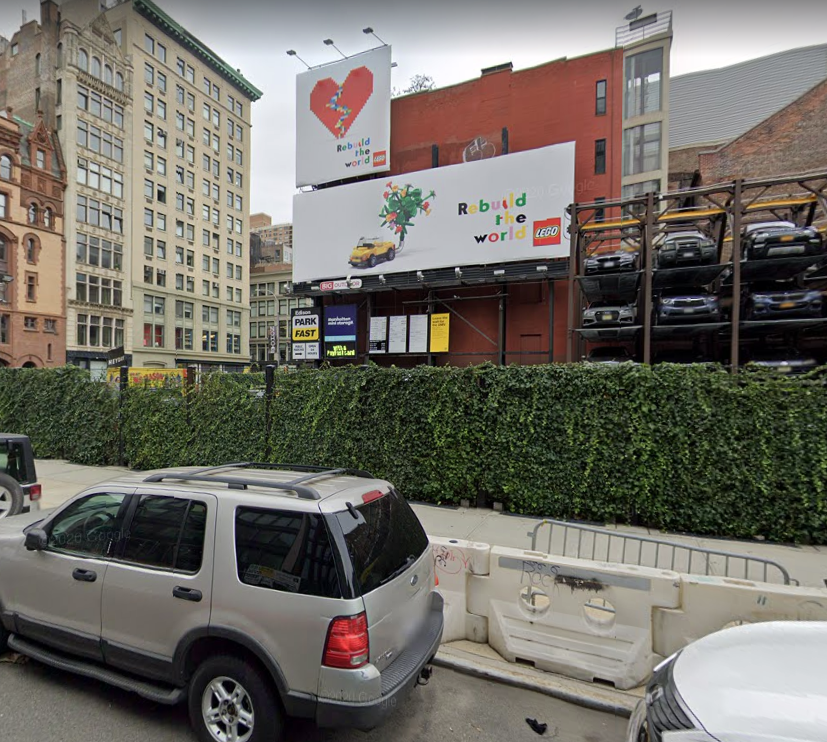
However, Anthony Borelli, a senior vice president of Edison Properties, which owns two major development sites in the rezoning area — open-air parking lots at 375 Lafayette St. and 174 Centre St. — promised the company would build affordable housing.
“M.I.H. will assure that affordable housing is part of any project on Edison Properties sites,” he said. Again, M.I.H. is a voluntary program on the part of developers.
Rezoning is ‘stressful’
Original Soho residents, who pioneered the abandoned industrial neighborhood in the 1970s, testified — all of them against the rezoning plan. One longtime artist resident said the stress of getting through the pandemic was heightened by the rezoning also hanging over their heads.
Flavin Judd, the son of the late Minimalist artist Donald Judd, warned that the rezoning would create a dangerous template.
“I grew up in Soho but I can’t afford to live there anymore,” he said. “It’s become a shopping mall. This plan will increase that. Luxury apartments and retail are the model. In the future, they will have the model for what they want to do in the rest of the city — as in, not build affordable housing.”
Similarly, Peter Feld, an East Villager who attended the hearing, said the rezoning would mainly result in luxury pied-à-terres, or as he put it, “vertical safe-deposit boxes.”
Would West Village be next?
Leslie Clark, a leading member of the West Village Residents Association, said the Soho/Noho rezoning is City Planning’s opening foray at trying to open up protected areas for demolition and new construction.
“I feel that just as in Soho and Noho, it will happen in the West Village, the demolition of buildings,” she said. “I feel that this is part of a larger real estate agenda to replace rent-regulated housing with luxury housing — of which we have plenty in the city.”
Tenant advocate: ‘Opening the floodgates’
According to Village Preservation, about 1,000, or one in four of the rezoning area’s current residential units, are rent-regulated affordable housing. Michael McKee, treasurer of Tenants PAC, has said the rezoning would “put a target” on these residents’ backs.
“We believe this plan would open the floodgates to demolition,” McKee said. “Demolition is something I know a lot about — I’ve been doing this work for 51 years. This plan would be irresistible to predatory real estate speculators. … I don’t know how you’re going to be able to fix this plan by the end of this year, when some of you [councilmembers] will be gone,” he said, urging the Council to drop the current plan.
Former L.P.C. chair says, ‘No’
Sherida Paulsen, a former chairperson of the Landmarks Preservation Commission, also spoke against the rezoning.
“The current zoning adopted years ago has many, many flaws,” she conceded. “But it served its purpose of protecting the buildings.”
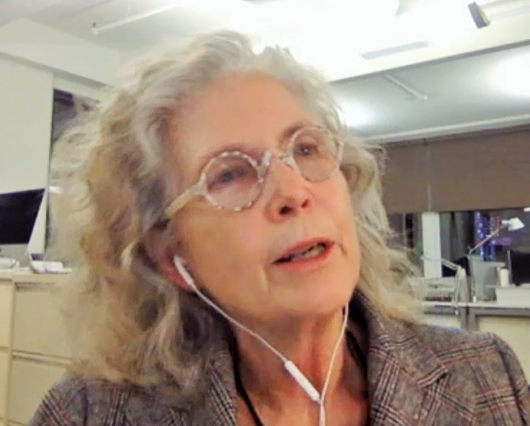
Bo Riccobono, a C.B. 2 member, said, “To me, it’s a no-brainer. One of the jewels of New York City is Soho. There are areas in the city, in Midtown and the Financial District, that could easily be converted to residential [instead].”
As Stephen Wanta, an architect living in Soho, put it, “Upzoning a historic district is horrible in itself.”
Jeffrey Kroessler, president of The City Club of New York, said the civic group is “virulently opposed” to the rezoning.
“New Yorkers like the fine-grained character of these blocks,” he said of Soho and Noho. “They do not want supertall towers for offshore capital. This plan is a lie and a fraud.”
Attorney: ‘Onerous, punitive’ flip tax
Even attorney Margaret Baisley, who over the past 20 years has been one of the loudest voices calling for removing Soho’s restrictive (though seldom enforced) artist-resident zoning, slammed the current proposal. Specifically, she protested what she called the scheme’s “onerous, punitive” tax on converting J.L.W.Q.A.-zoned apartments for use by current nonartist residents or sale to nonartists.
“Don’t make seniors pay $250,000 for the privilege of living in their loft or selling them in their retirement,” she said.
However, Baisley said she could support the plan if the flip tax were removed and building height caps were “a little bit lower.”
Activist: ‘Chinatown will be displaced’
Zishun Ning, a member of Youth Against Displacement and the Coalition to Protect Chinatown and the Lower East Side, railed against the effect the rezoning would have on existing affordable housing in what the city has redubbed “Soho East,” which is actually part of Chinatown. More than 40 percent of the expected development under the rezoning would be in this area, according to the city.
“Chinatown will be displaced,” Ning fumed, “but a few lucky ones should get [new] affordable housing. Mayor de Blasio wants to see us divided. He promotes racism in the name of equality. He has left a legacy of racism and development.”
Glick: Chin’s law ‘unclear’
Toward the end of the lengthy hearing, Glick shot The Village Sun an e-mail about Chin’s proposal to increase the fines relating to residents who are not city-certified artists in J.L.Q.W.A. homes in Soho and Noho. On the whole, Glick called the idea “very disappointing.”
“It sounds good: ‘Let’s make certain that J.L.W.Q.A. units are occupied by “real artists,”’ she said. “Unfortunately, the key word used by City Planning was ‘certified’ artists and the city has rarely certified artists in the last many years. It is the city that was the entity that stopped enforcing the regulations, thereby allowing [wealthy] nonartists to move into areas that should have been protected and retained for artists only. The majority of people who actually live here are working and middle class — the uber-rich rarely have only one residence.
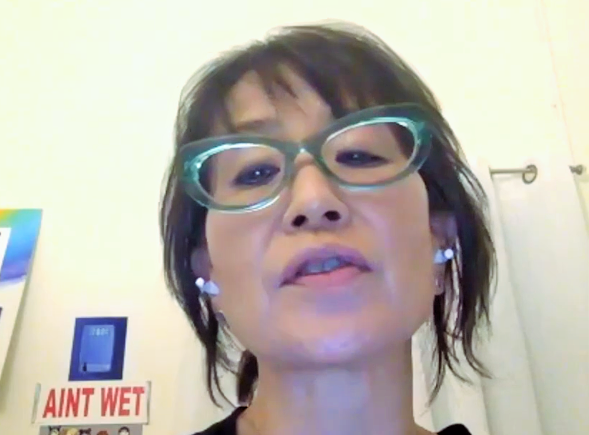
“Councilmember Chin’s legislation is unclear who gets fined — and what undefined documentation would be required to avoid punitive fines, or landlord harassment,” Glick added. “Will it encourage landlords to report that an artist isn’t really an artist, and what will that artist need to prove they are indeed an artist? Very disappointing.”
Questioning the public process
Some of the rezoning backers, trying to discount the clearly larger contingent of speakers against the plan, argued that public hearings were not representative of broader sentiment on the issue, claiming it’s hard for working people to find the time to attend them. This is actually currently an in-vogue talking point used by advocates, such as at community board meetings when they feel outnumbered on issues.
Even Michelle Kuppersmith, the chairperson of the C.B. 3 State Liquor Authority and Department of Consumer Affairs Licensing Committee, who said she supports the rezoning, called the hearing unrepresentative, noting, “Just because you aren’t privileged enough to be able to sit in a meeting for hours doesn’t mean you don’t care about the community.”
However, Moya noted that people who could not attend the hearing could send their written testimony to landusetestimony@council.nyc.gov. This is a long-standing standard practice for public hearings in New York City.

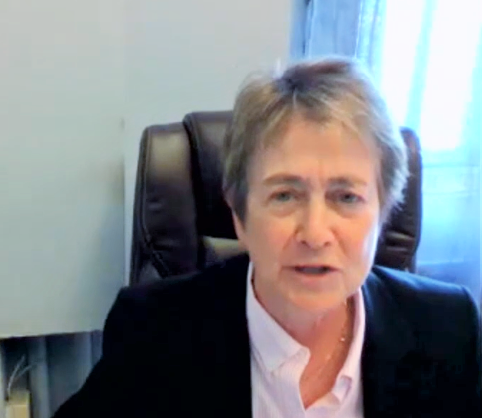
Where is Erik Bottcher? Asleep again?
Councilwoman Chin, the intention of the Bill you introduced is 40 years too late and does NOT protect the JLWQA units. If the regulation had been enforced by the Dept. of Buildings, these neighborhoods would look very different today.
What it does do is add a new layer of insecurity to those in the arts who have owned their lofts for years but were never able to be certified as artists…dancers, designers, architects for example.
It places a mark on the back of widowed nonartists — seniors, Ms Chin, whom you regularly champion.
And it targets all nonconforming stakeholders with thousand of dollars in fines OR what? You think they should twist the arms of all the residents of a Coop or Condo to pay the $100 Sq ft or any other number Dept. of City Planning throws out?
Why?
How does that help those who live here and find it already very expensive to stay in their forever homes?
Since you felt the need to impose new taxes, are there tax breaks for seniors noted anywhere in your Bill proposal? No! But that wouldn’t have made it a better Bill, anyway.
Another failure of your “intention” with this Bill’s proposal is that it doesn’t recognize that without the partnership of the nonconforming artists and business professionals, as our (certified artists’) financial partners, the very original stakeholders could never have maintained the facades, PUBLIC vaulted sidewalks, the roofs, the mechanicals of these majestic gems on our own.
Seriously, have you looked and noticed lately that there aren’t any “money” trees — or any open green space, for that matter– in SoHo!
Without the sale to nonartists, the City wouldn’t have been able to collect the sky-high property taxes from these neighborhoods.
Another HUGE “intention” fallacy is that this tax would protect the JLWQA units. NO it does not!
What it does do is it pits legal artists against their neighbors and fellow shareholders. Your intention is to hurt. To inflict psychological and financial damage on NYC SoHo/NoHo taxpayers and destabilize the existing housing market.
Every single JLWQA unit should be preserved and a GOOD PLAN would build even more JLWQA units.
What needs protection is that no matter WHO resides in JLWQA units, they can not EVER dictate or be in the position to determine that “ART” can’t be created in those spaces because “they” don’t like the smell or sound that might come from the work being created there.
By simply changing JLWQA to JLWQ, it would protect the units.
Councilwoman Chin, it was wrong for you to create a Bill, which “outsiders” have already categorized as an ill-conceived, vengeful ‘ parting gift.”
What good do you gain from your proposal?
As someone who has always “felt” we had a meaningful relationship, I hope it was worth it?
Are you a nonconforming artist who has a JLWQA apartment?
Local NIMBYs oppose building in their backyard. More at 11.
One thing jumped out at me in what is otherwise a decently reported piece (even if I disagree with its editorial slant): “This assumes — many would say, incorrectly — that the global demand for luxury housing in New York City is, in fact, not insatiable.” Who are the “many” who would say this? Is it the same people who say the other false things? We just went through a pandemic where we saw that demand for high-end real estate isn’t unlimited and that the market for high-end real estate is actually closely tied to demand. If you only allow a few buildings to be built, of course the units will all be high-end and of course there will be demand for them. This one rezoning isn’t going to fix what is a citywide issue, but it’s the first step in building enough housing to meet the demand.
Also, I love seeing people say things like the quote from Judd: “I grew up in Soho but I can’t afford to live there anymore.” That’s exactly the point! Has he ever asked himself why that is? Has he ever had to explain why the right thing to do is maintain the same policies that have priced him out of the neighborhood he grew up in? The neighborhood became unaffordable without any changes in zoning because the thing that makes housing more expensive isn’t building more “luxury” housing. It’s not building any housing while demand continues to grow.